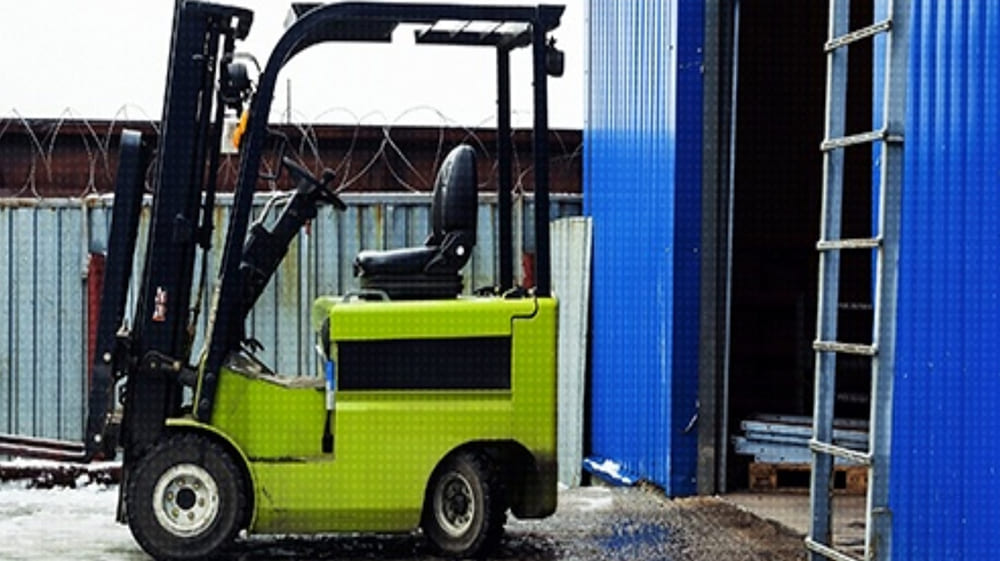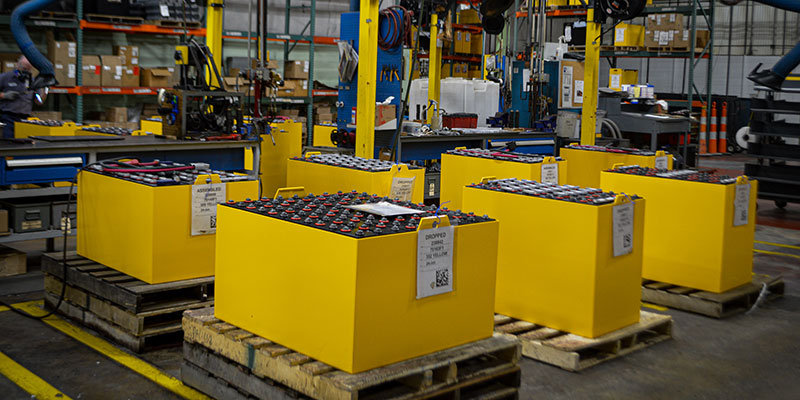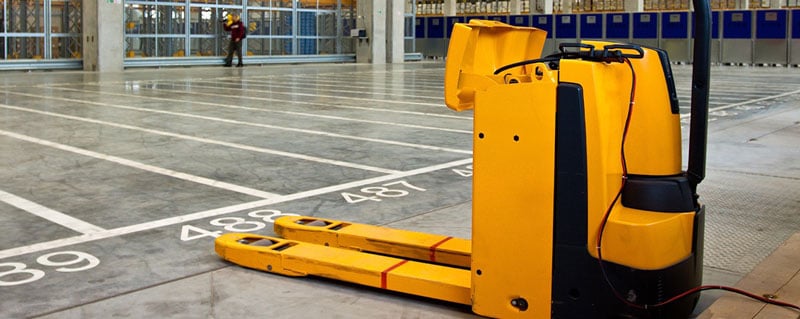Your entire operations depend on forklifts running smoothly with little or no downtime.
These five simple steps will help make sure you get the most out of your forklifts – and maximize your ROI.
1. Ensure employees charge batteries after shifts (or opportunity charge
We know you’re thinking – this is so obvious, we shouldn’t have to write it.
But it’s a fact: Proper battery charging is often the first thing to go when things get busy. And with global supply chains disrupted and shipments more unpredictable than ever – things are certainly busy.
That’s a problem for battery life and uptime. If batteries are discharged until only a 20% charge remains, that can harm longevity – and even cause overheating and damage to your battery and lift truck.
And if someone forgets to charge the battery, that could put a forklift out of commission – and lead to costly delays.
So how do you make sure that employees always charge forklifts at the end of the shift?
- Make it easy: Install chargers exactly where forklifts are stored and require employees to dock them there at the end of their shift (or during breaks if opportunity charging)
- Make it obvious: On the wall near charging stations, hang large posters with pictures and written descriptions of exactly how to charge and/or check forklift batteries. Consider bilingual posters.
- Build in accountability. For instance, employees can put their initials on a charging log to show that they were the last person responsible for charging the battery. That way, employees will look out for the next person – and you’ll know who’s responsible if charging doesn’t happen.
2. Make maintenance routine
All batteries need regular maintenance to last longer and perform better, even AGM and lithium-ion models.
And you can make maintenance quick, easy, and automatic with the three-step process in our Battery Maintenance Made Easy article.
3. Consider smarter battery chargers
Beyond the basics like ensuring a charger’s output voltage and Ampere hour (Ah) rating fits your battery...
It often makes financial sense to see whether you have the right charger for your setup and operating conditions.
Each type of battery charger has its own benefits and drawbacks:
- Ferroresonant chargers have the lowest upfront costs and are reliable. But because they can’t monitor charge levels or adjust them based on battery temperature and other data – these chargers put too much energy into batteries. This overcharging leads to overheating, along with decreased performance and lifespan. (And overheating equals wasted energy that you paid for.)
- Silicon-Controlled Rectifier chargers (SCR) offer multi-voltage capabilities, so they’ll work with multiple batteries. And despite being slower and less efficient than newer models, they are cost-effective.
- Smart (“opportunity”) and High-Frequency chargers use less energy but charge faster. They also avoid overcharging and overheating because their computers monitor charge rates, temperature, and other variables. The results are longer life (no overheating), lower energy bills (no overcharging), and increased capacity (smart charging).
In many applications, the ROI for a charger is just a few years – and they last for more than a decade. Some models even feature data collection to make fleet management easier and more profitable. And that leads us to the next tip.
4. Log your battery data
By the time warehouse managers catch most battery problems, it’s already too late.
But if you gather battery data – and in order to do it – you have a significant competitive advantage.
That’s because monitoring and interpreting data help you spot battery issues when they are easy to fix. You’ll also be able to plan replacements further out, keep management and employees happy, and avoid costly failures and downtime.
5. get an energy storage audit
Even the smartest warehouse and operations managers are often limited by only seeing best practices in their organization – and by having so many projects on their plate.
That’s where getting outside help from a battery specialist health the most.
Our National Account team can help you see first-hand how smart dashboards can save your time. They’re thoroughly trained and have extensive experience to help you get more out of your energy storage systems and operations.
That means less stress, a smaller workload, and improved profitability and uptime.












